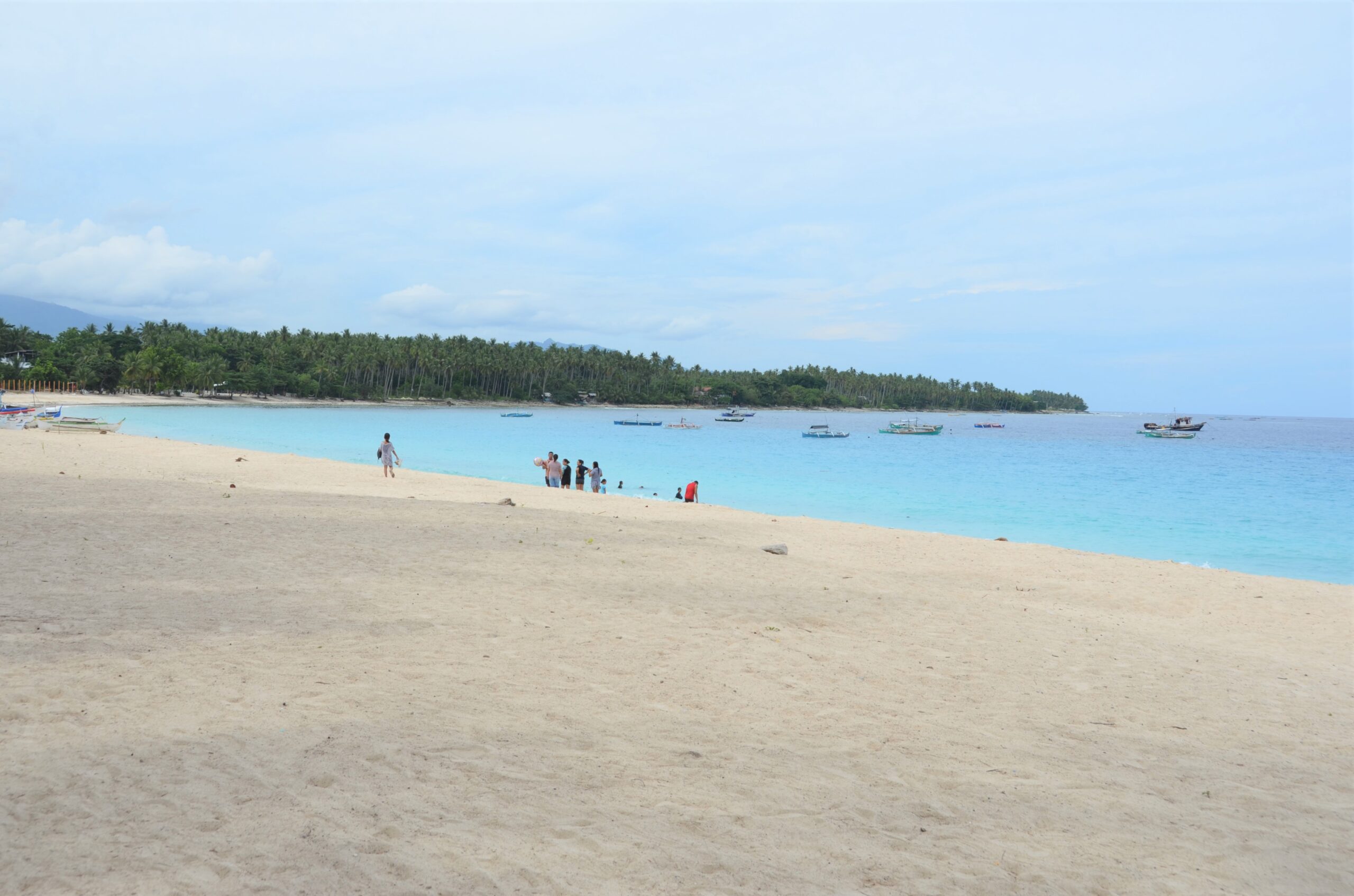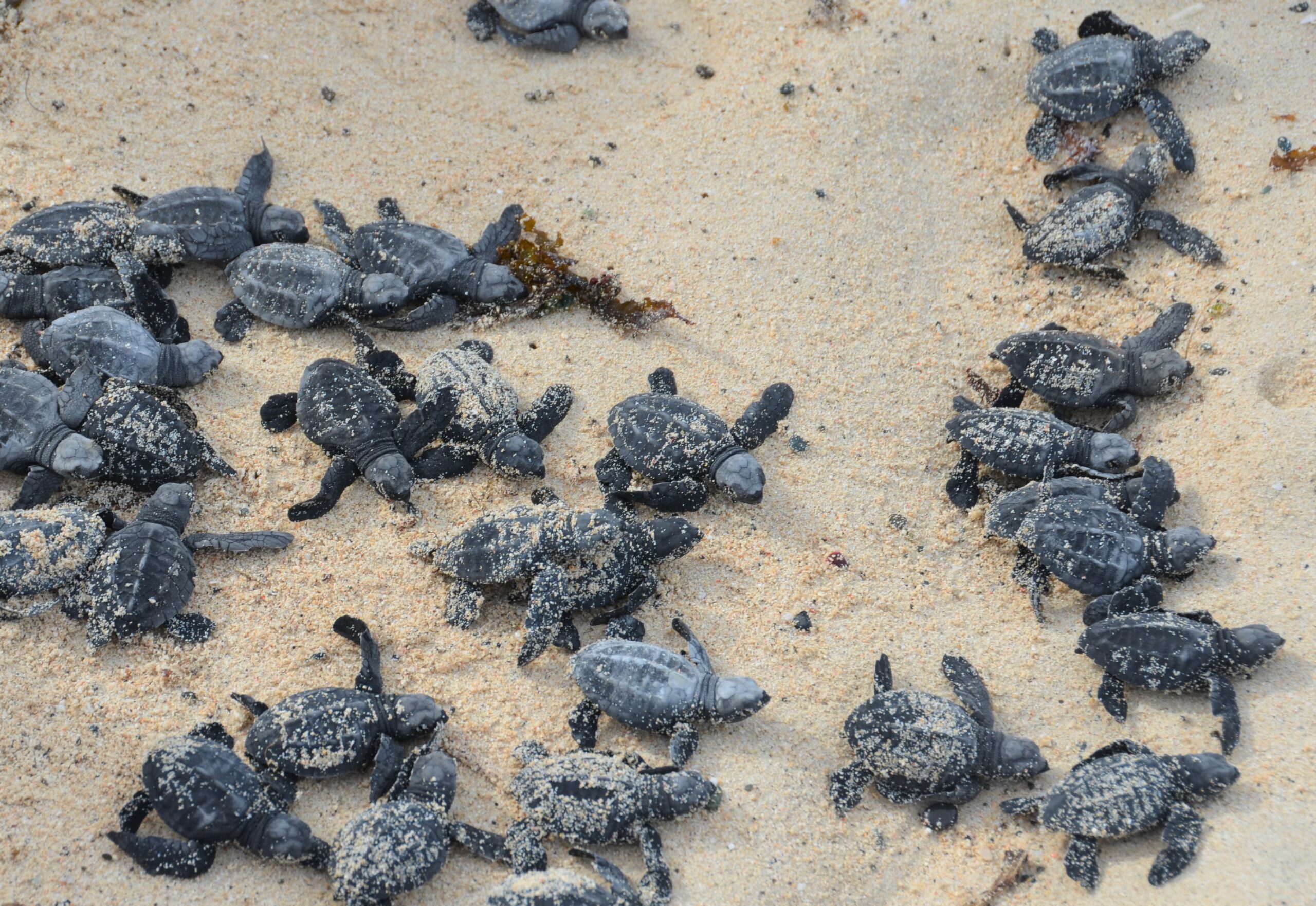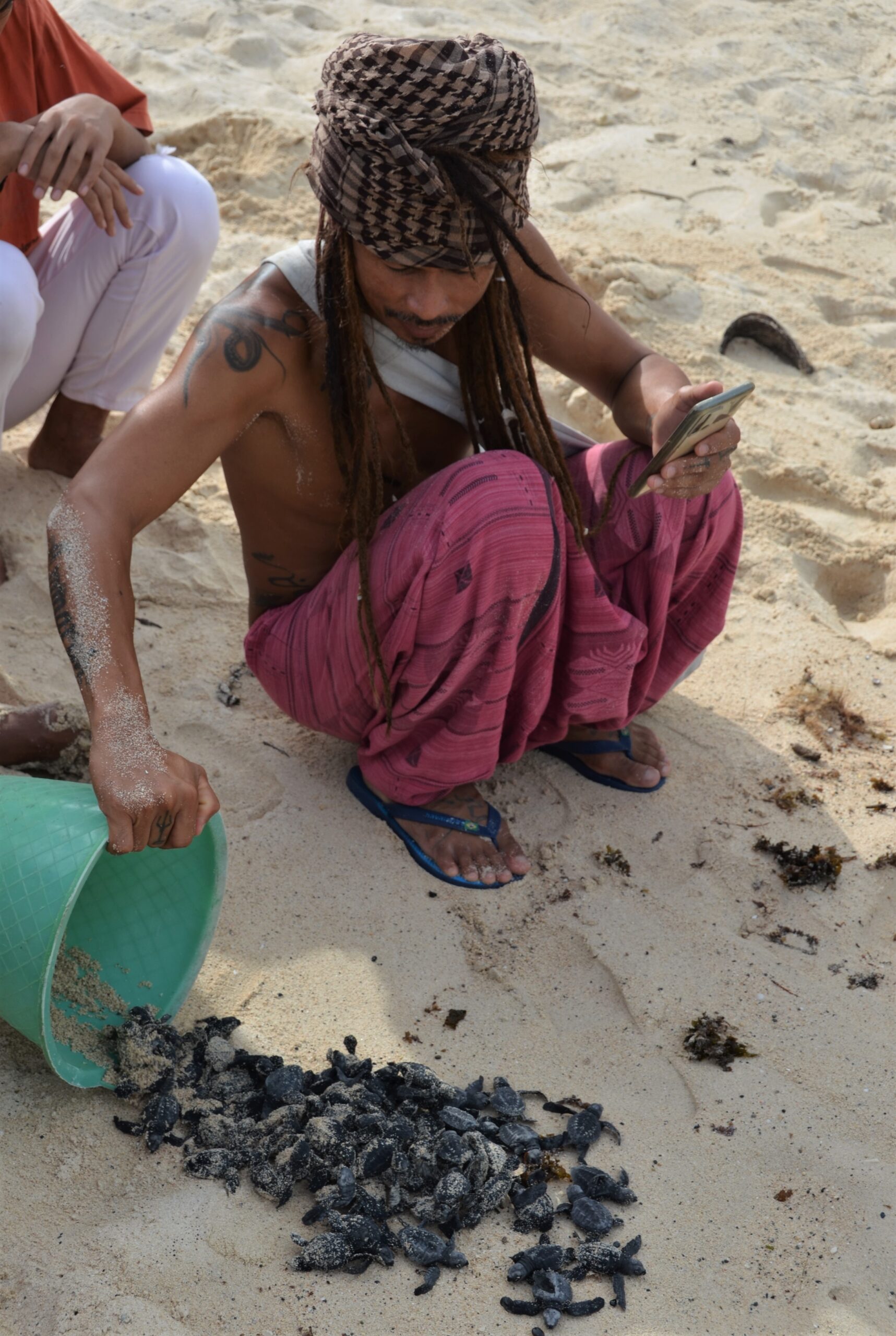Text and Photos by Henrylito D. Tacio
Dahican Beach – a seven-kilometer stretch of white sand facing the Pacific Ocean – is about 15 minutes from the heart of Mati City in Davao Oriental. In the past, you had to pass over rough roads before reaching the beach. But since it has been identified as one of the city’s come-ons, the road is now being fixed.
There are few resorts you can find near the beach. Although there are no regular vehicles going there, you can always hire a motor cab if you want to go there. But the good thing about Dahican is that there is no entrance fee (except for some areas). It is open to anyone who comes – whether locals or foreigners.
“I have not seen such a wonderful beach, not even in Boracay,” commented a recent American visitor who had also been to Boracay. “The Dahican Beach is a South Sea dream come true.”
Swimming is not the only thing you can do while you are at Dahican Beach. If you like water adventures like skimboarding, this is the best place to be in Davao region. In fact, several skimboarding competitions have been held in the place; it is being touted as the Skimboarding Capital of Mindanao.
“There are several reasons why it should be called such,” explained Dashiel Indelible, Jr., the city tourism officer. “For one, our sand here is white unlike others which are dark or black. For another, the water is pristine and crystal blue. But most important, the waves are what skimboarders are looking for – not so high and not too low but something in-between.”
Skimboarders who come to the place said that the waves of Dahican are great. On good days, the waves go up to as high as 6-8 feet. On other days, the waves may only be 3-5 feet, which are still good for skimboarding.
But Dahican is not only known for its white sand beach or skimboarding activities, but also for its marine wildlife species that thrive under its waters.
Dahican is a local term which means “to come in from the sea.” And it is because of pawikan, the local term for marine turtles. Green Sea, Hawksbill, and Olive Ridley are the turtle species that have made Dahican’s shoreline their nesting site.
Unfortunately, these three species are listed in the International Union for the Conservation of Nature and Natural Resources as endangered. What this means is that “they are in danger of extinction and whose survival is unlikely if causal factors continue operating.”
Studies have shown that every time the female marine turtle nest, she always returns to the place even if she is thousands of miles away from the area.


The two marine turtle species trudge ashore to dig holes in the sand and lay their eggs there. “If you’re lucky, you can swim along with the pawikan in the waters,” said Winston Plaza, who is connected with the Amihan sa Dahican-Save Our Seas Project.
Amihan sa Dahican – named after the northeasterly winds that blow through the area from November to March – was established in 2004 with three-fold purpose: conserve marine wildlife species in the bay, take care of young kids, and share surfing and skimboarding skills with visitors.
“Our motto is: If you love nature, nature will love you back,” said Pedro G. Plaza, Jr. the younger brother of Winston and the president of Amihan sa Dahican.
In the beginning, Amihan sa Dahican was known as a good training camp for skimboarding and surfing. Some of its members have earned awards in national and international competitions.
Many children from the city and nearby areas came to Amihan to learn skimboarding and surfing. “Many of them have dropped out of school and some walked away from their homes because of poverty,” said its website. “We serve as a second family to them and safeguard their value formation, encourage them to get education, thus offering them a chance to improve their lives.”
To become a member of Amihan sa Dahican, he or she has to follow some strict rules. Skimboard and surf lessons are held after school and on weekends. They are also forbidden to smoke, drink or take drugs. Anyone breaking the rules is either barred from practice or kicked out of the team.
As Dahican Beach is a marine sanctuary, the team sees to it that the marine wildlife species teeming the waters are well protected. They manage to do it through conservation activities. They participate in different group exposure and share their experiences on how they protect and conserve the marine wildlife species of Mayo Bay.
Aside from marine turtles, the entire Mayo Bay – of which Dahican Beach is a part – is home to dugongs, dolphins, stingrays, and whale sharks.
“We patrol the beaches at night to protect turtle eggs from poachers and predators,” the website stated. It has set up two hatcheries, with help from some government agencies and private entities.
A female pawikan, it is said, would drag her bulky frame into the sand and build a nest, and to eventually lay eggs. The nests are flask-shaped cavities dug in the sand by the shoveling motions of the nesting turtle’s hind limbs. One nest may contain as many as 100 eggs.
From time to time, the Amihan team discovers turtle eggs being laid in various sites of the beach. They recover them and bring them to the pawikan hatchery for safety and protection from predators. They monitor the eggs and wait for approximately 60 days for the eggs to hatch.
In the wild, the period after hatching is a fight for survival. After they are hatched, it’s a race from their nests in the sand to the water. Once they are in the waters, it’s survival of the fittest as some of them may be eaten by other marine creatures, including fish.
Since the Save Our Seas Project was established, they have already released thousands of pawikan hatchlings. For instance, from July 2021 to August this year, the project has released more than 6,000 pawikan hatchlings.
“For every 100 pawikan hatchlings we release into the waters, only one of them will survive in the open waters,” said Winston.
They have also released adult marine turtles. Last July, a Green Sea turtle caught accidentally by hook fishing was surrendered by a local fisherman to them. After successfully removing the hook, they released it back to the sea.
“Amihan sa Dahican is all about teaching people about skimboarding and surfing and conservation and protection of marine wildlife species teeming our waters,” Plaza said. “We are not seeking money for what we are doing.”


Right now, there are 35 members of the team who conduct training on skimboarding and surfing to people who come to Dahican Beach and are interested in those water activities. The money they receive for these training is used for the education of its 40 beneficiaries, mostly children.
“Even if the budget is not enough, gina-insakto lang gyud namo,” Plaza said.
Amihan sa Dahican is barely surviving, but the members are doing it in order for “the organization to stay so that the next generation could benefit from it.”
The same is true with the marine turtles they are trying to save from extinction.
Although marine turtles have survived, the ancient creatures may soon join the dinosaurs if they are not protected. They are hunted in the sea or slaughtered on the beach while they lay eggs. The eggs and meat are taken as food, while their skins and shells are processed into various by-products.
As a result, the local population of marine turtles has dropped to dangerously low levels.
“Unless we seriously take on the task of protecting our much-endangered marine turtles, these ancient creatures will no longer be swimming in our waters,” deplores the Haribon, one of the country’s well-known environmental groups.
According to the Department of Environment and Natural Resources (DENR), marine turtles are large, air-breathing reptiles that persist today in relatively the same form as their ancestors did 200 million years ago.
Marine turtles are well adapted to life at sea. They are powerful swimmers and can remain underwater for long periods of time. They do not have external ears and cannot hear well, but their senses of sight, taste, and touch are well developed. Having no teeth, the marine turtle uses its sharp, horny beak and sturdy jaws to tear and bite its food.
There are only eight species of marine turtles in the world, and five of them can be found in the Philippines: Green Sea turtle (scientific name: Chelonia mydas), Hawksbill turtle (Eretmochelys imbricata), Olive Ridley turtle (Lepidocheyls olivacea), Loggerhead turtle (Caretta caretta), and Leatherback turtle (Dermochelys coriacea).
Among the species not found in the country are Kemps’ Ridley turtle (Lepidochelys kempi), Flatback turtle (Chelonia depressa), and Black Sea turtle (Chelonia agassizi).
The Green Sea turtle is the only marine turtle that lives on plants. They are the most widely distributed species in the country with Turtle Islands as a major nesting ground. The Hawksbill turtle, one of the most beautiful sea turtles, is valued for their shells – the source of the so-called “tortoise shell” for handicrafts and jewelry. This species is the second most widely distributed in the Philippines.
Olive Ridley turtle, one of the smallest marine turtles, is distributed throughout the Philippines, with most reports from the coasts of Zambales. Rarely sighted, with documented sightings in Albay, Palawan, and Basilan provinces, are the Loggerhead turtles, which hunt near coral reefs and rocks for food.
The Leatherback turtle is the largest sea turtle living today, as it grows to 190 centimeters long and weighs 600 kilograms. In recent years, most sightings of this species have been reported in the Central Philippines.
“Today, man’s growing need for survival has endangered the very existence of these sea-dwelling creatures,” points out the International Institute of Rural Reconstruction. “All over the world, these reptiles are threatened with extinction by indifferent and relentless commercial exploitation.”
“Marine turtles serve as a barometer of our planet’s health,” says the DENR’s Pawikan Conservation Project. “It is possible that in a world in which marine turtles cannot survive may soon become a world in which humans struggle to survive.”
It added that in “saving one of the earth’s most mysterious and time-honored creatures, we might just be saving ourselves, too.”

